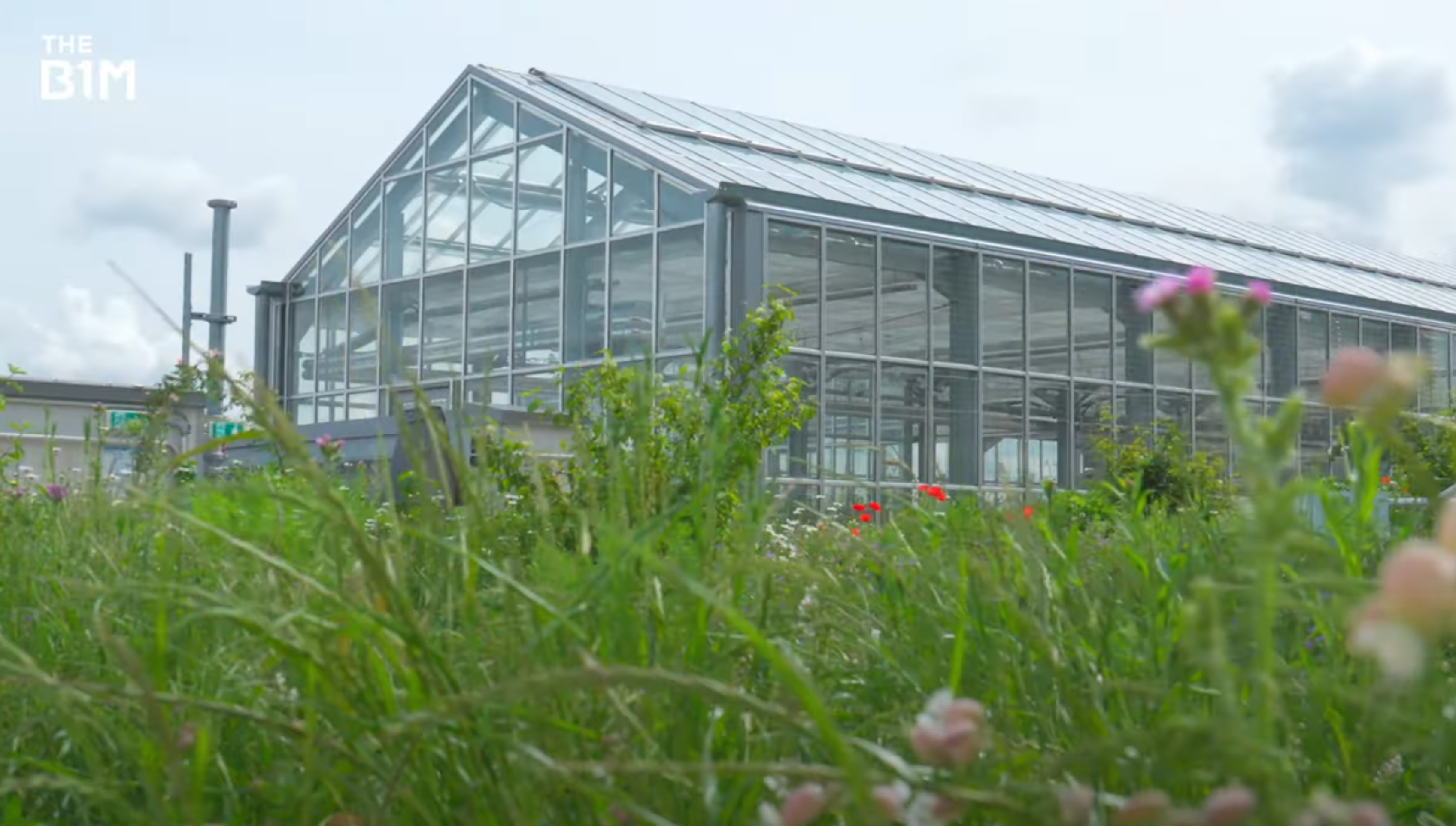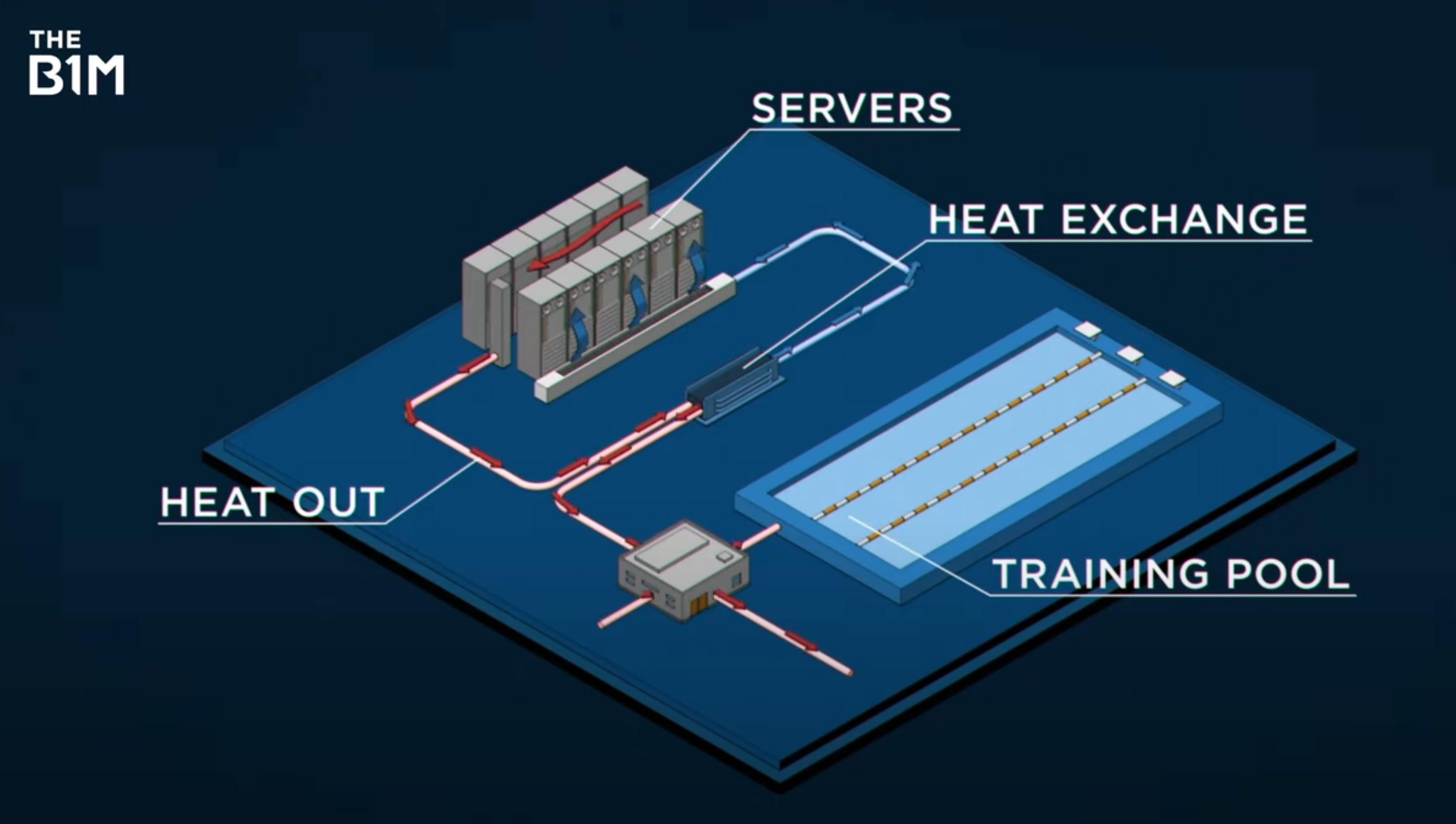The Paris 2024 Olympic Aquatic Centre is Heated by the Internet
- Youtube Views 317,828 VIDEO VIEWS
Video hosted and narrated by Fred Mills. This video contains paid promotion for Equinix.
BY READING this article you are helping heat the district containing the 2024 Olympic training pool. Yes, really.
Heat from a nearby data center is being redirected underneath this Paris neighborhood. It’s an incredible feat of engineering that could have all sorts of ramifications for cities right around the world.
Could all our online activity actually help heat entire districts? This is the bright, green future of the internet.
Paris’ green make over
The Olympics is going green, and taking Paris with it.
Gone are the days of spending billions on entire Olympic Parks and multiple new state-of-the-art venues. It’s now much more about restraint, managed costs and longer term legacy.
Paris is a shining example of this new era, with almost every event taking place in an existing or temporary arena. In fact, just two new permanent sports facilities have been constructed: the beautiful Aquatic Centre and the much smaller Le Bourget Climbing Wall.

Above: The Paris 2024 Olympic Aquatics Centre.
Now, the Aquatic Centre is already a low-carbon building, with many of its materials being bio-based. It also has that massive 5,000 square-meter roof which is covered with photovoltaic panels. Those panels help to generate energy for the building - and also give it the title of France’s largest urban solar farm.
The city of Paris itself is also undergoing a green makeover to coincide with the Olympics. There’s going to be new public parks, traffic taken off the roads, even entire carbon-neutral neighborhoods. You’ll also be able to swim in the Seine for the first time in more than a century.
One of the city’s key districts is also going to be being heated by the internet – but to explain how, we need to take you back a few steps and give you a quick recap on how the internet actually works.
The internet is a real place
It’s easy to forget that The Cloud is in fact a real place. Well, lots of places actually. The internet is a network that connects servers stored in data centers all over the world. And all the equipment in those data centers produces an enormous amount of heat.
“Whether you realize it or not, you are likely to use the services of the data center in your daily life,” explains Nicolas Buono, Operations Senior Director at Equinix.
“Whenever you look at a Netflix program or you're making an appointment at your hairdresser or for your doctor, you obviously use the services from a data center.”
Now granted, data centers might not sound that exciting, but they are actually some of the most secure and locked-down buildings on the planet.
Normally they’re way off-limits and almost impossible to get into, but today’s sponsor Equinix reached out to us and invited us inside. What we uncovered was not just how data centers work, but how they are evolving.

Above: The greenhouse sitting on top of PA10.
We visited PA10, a state-of-the-art new data center in Paris. In fact, it’s so innovative that it’s less of a data center and more of a “data campus”.
To help lift the lid on this building and learn more about how it works, we caught up with Rachel Kumcur, one of the supervisors at PA10.
She told us about the greenhouse sitting on top of the data center, whose heat comes from the servers below.
“So the rooftop is a home for 430m² of greenhouse that grows vegetables and fruits, particularly tomatoes, strawberries, eggplants,” she told us.
“We try to help our city. How? So all the fruits or vegetables, what you see here is shared with the community. We try to give to solidarity groceries or associations to help everyone who suffers from food insecurity.”
It’s of course the stuff that’s happening down below this little Oasis that makes it possible.
Putting heat to good use
The heat from data centers would ordinarily be lost. But PA10 shows it can be harnessed and put to all kinds of other uses, from growing fruit to heating entire neighborhoods. And, it all happens through a process known as “heat export”.
The equipment in data halls reaches between 25 to 30°C worth of heat. And that heat gets transferred to a different room where huge fans blow it against pipes filled with liquid.
Pipes would ordinarily take that heated liquid and transfer it to a cooling system which would eject it via the roof. Now that’s great for keeping the data center cool, but it's a bit of a waste of all that heat.

Above: How heat is typically managed in a data center.
But, at PA10 a portion of the heat is transferred to a heat exchanger, that’s basically like a series of plates that allow it to pass very close to the district heating main system. And from there, the heat is taken on right across this community to all different types of buildings. Including the Paris 2024 Olympic Pool.
“The basic idea behind heat recovery is taking the heat that’s generated by our customers' IT equipment within our data centers, this heat is diverted through a heat exchanger, which transfers the heat from our data center cooling system, to an energy company’s system,” explains Noah Nkonge, Senior Manager, Sustainability, Heat Export at Equinix.
“And this energy company then raises the temperature of this from 30 to about 60+ and then that’s when it's pumped via buried pipework to the community.”
“It will be reused by different stakeholders. Here, for example, in an area of about 200,000m² it will be used by about 1,600 homes. It will cover businesses as well. But of course, it will be used by the Olympic pool to heat the pool,” adds Buono
An untapped resource
So let’s just break that down. You’re reading this article at home, on your phone. That article, and the above video, is stored in servers.
The heat given off by the chips in those servers is then transferred through a system of pipes to this district in Paris.
That district contains the Olympic training pool, where the heat is being used to warm the water ready for the athletes at Paris 2024.

Above: How data centres are heating the Olympic training pool.
It’s a really bold idea. Equinix even estimates they can heat at least 1,000 homes – but that is just the tip of the iceberg.
“There's a study that was done by Europeheat & Power they estimated that there's about 77 terawatt hours of energy available in the form of heat that could be captured from data centers,” Nkonge tells us. “And to put that into some sort of context, that means that could supply about 8M homes across the EU with heat from data centers.”
And that’s just the start, Equinix has signed on to heat 3,000 homes in a new scheme in Europe.
There’s also going to be a lot more heat to expend in the future, because data centers are having to expand to meet the processing demands behind AI.
So, as it turns out the servers that contain the internet are an untapped resource ripe for the taking. With the cost of living and energy crises, much of the world is crying out for innovative ways forward, and it could just be that in an unexpected twist, the internet holds the answer.
This video contains paid promotion for Equinix. Learn more about heat export here.
Video narrated by Fred Mills. Additional footage and images courtesy of Equinix and OpenStreetMap Contributors.







